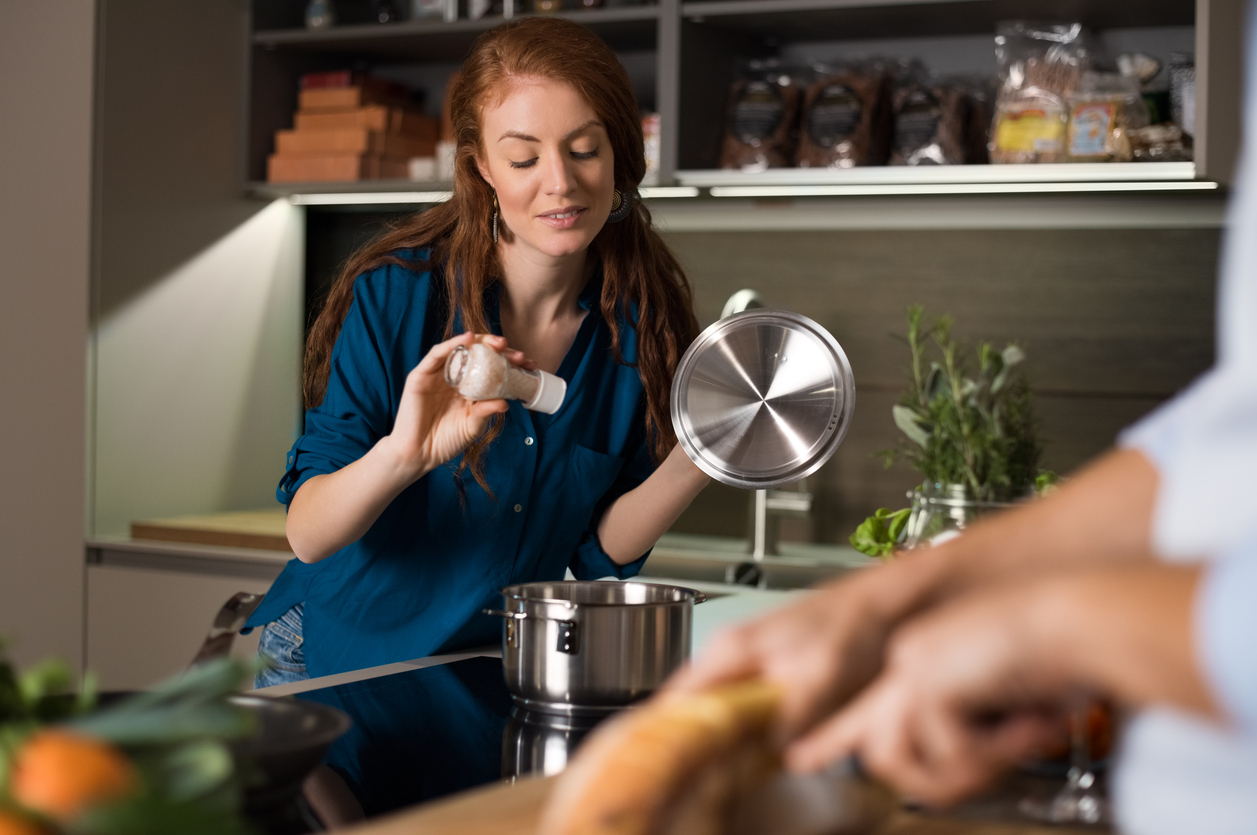From the news around the world, 2016 was a challenging year for many people. In my case, I developed more severe food allergies. It was like I’d gotten an extra, unwanted Christmas present that I just couldn’t return. Looking back, however, I can see how 2016 taught me a lot as well. Most of the lessons were learned the hard way… so I’m hoping that by sharing them, you can learn from my mistakes!
1) Take your allergens seriously!
Before 2016, I was prescribed an epinephrine auto-injector, but I didn’t always carry it with me. I avoided eating my allergens, but my housemates ate them, cooked with their flours, and I wasn’t at all careful about cross-contamination. If you’ve had allergies for a long time, you know how reckless that was… but being at-risk for anaphylaxis was all so new to me… and it’s hard to change old habits. That said, I wish I’d at least tried to change those habits before I was visiting the ER every 2-3 days in January 2016… I felt so stupid, coming in and explaining that my housemates had cooked with almond flour, and that I hadn’t washed the counter before preparing and eating my food. I have now learned to prepare my defensive strategy before using the kitchen. I have a placemat I use, I wash counters before I cook with them, and I always wash my hands immediately before eating. If I visit a friend, I re-wash dishes before I use them. I don’t trust dishwashers, as some leave caked-on food. My housemates take great care in washing dishes, so at least I can trust the dishes at home. They know that when they don’t wash things carefully… they might get woken up late at night with a surprise trip to the hospital!
2) Epinephrine auto-injectors aren’t painful!
So, I learned this a few years back during my first ever reaction… but I was sufficiently surprised that it bears repeating. Remember the best vaccine you’ve ever been given? Like where you asked if the nurse was going to give it to you and then they told you it was already done? That’s my experience with epinephrine auto-injectors. I freaked out SO MUCH the first time, I sobbed to the 911 operator “I know how to do this, but I can’t do this!!!” You see, I’d taken a decade of first aid courses, and they had told me that auto-injectors can work through jeans… and so I was imagining this giant needle that would hurt a LOT. What I have since realized is that thinking of an auto-injector as big isn’t quite right. It’s actually a very thin gauge of needle. Honestly, none of the 16 or so auto-injectors I’ve had to use have hurt. Blood pressure cuffs inflating, on the other hand, are very painful, especially if you’re texting with the same hand, so make sure to drop your phone and relax if someone’s taking your pressure!

3) Keep your epinephrine auto-injector where you can reach it, and let others know where it is!
In April 2016 I had the scariest reaction of my life. It started mild, as all my reactions do, and the serious symptoms were delayed, as many of my reactions are. Because I have chronic idiopathic hives as well as being at-risk for anaphylaxis, my allergist has given me permission to take over the counter antihistamines when I have specific mild symptoms. My hives went away, but I ignored the fact that I felt weird, and started getting ready for bed. I should have taken the epinephrine then. I took my regular night time medications instead, but as I went to swallow them they got stuck in my throat and I started coughing. Suddenly I couldn’t stop coughing, and all my symptoms came back. Dizziness, nausea, hives, redness, asthma, and I was coughing so hard I had to sit down. Coughing so hard I couldn’t get up to go get my EpiPen® in the belt that was a few meters away. Coughing so hard I couldn’t catch my breath or turn around to get the EpiPen® in the drawer about 2 inches behind me.
Thankfully, I was coughing so hard that I woke my housemates… who came downstairs, called 911, and handed me the EpiPen®. After that, I started keeping 4 epinephrine auto-injectors in the house: there is an EpiPen® next to my pillow, reachable from bed. There’s one in the belt around my waist. There’s one in my purse… and because all three of those are hard to access and easy to move, there is also one that doesn’t ever move, installed on a broom holder next to my door. Every person in the house knows where it is, so that if I react they can run and grab it. I’ve deliberately chosen not to live alone. My allergist and I are also working very hard to try and treat the chronic hives, because of course it is not recommended to take an over the counter antihistamine during a serious reaction!
4) Trust yourself, but don’t let others trust you during a reaction
One common thread during all of my serious reactions thus far? I don’t think straight. I don’t make rational decisions. I routinely ignore that nagging feeling that something is VERY wrong. I start behaving abnormally, illogically, and my answer to questions like “Are you ok? You look like you’re reacting to something” is consistently “I don’t know.” My family, and colleagues have mostly seen my reactions in person now… but it’s still one of the first things I go over if someone new joins our team at work, or if I’m eating out with friends. To give a few examples from 2016:
Near the beginning of January, I actually talked myself, my sister, and the paramedics out of giving me epinephrine… in spite of the fact that I knew something major was going on. To be fair, I was stable, and they were monitoring me… but when I was later triaged through urgent care and started re-reacting more severely, it was difficult to get the nurses’ attention. I did, and things moved very quickly, with epinephrine being administered there. Had I trusted myself in the first place, though, I could have saved myself 4 hours of misery.
The other experience where I was learning to tell others not to trust me during reactions came later. I was at work, and had a major asthma attack to some dry erase spray I was using. I collapsed, but decided against calling for help on my radio. I caught my breath, but when I told one of my colleagues what had just happened I again insisted that I was completely fine. Meanwhile I had developed hives and swelling and nausea but kept ignoring the symptoms and telling my colleagues that I didn’t know whether I was having a mild or severe reaction. Eventually the reaction progressed until I was physically unable to lift my auto-injector. Thankfully a different colleague noticed that I was about to pass out, and took action on my behalf.
My hope and prayer is that you’ll never have to go through those moments, where your logical brain is saying “I’m having a reaction, with the following symptoms, and need immediate medical assistance” but the anxiety added by the reaction results in you hiding the truth from others. You matter. Your reaction will be much more inconvenient the more it progresses. If you are experiencing an anaphylactic reaction, you are not wasting anyone’s time by getting their help.

5) Cooking from scratch is not impossible
Two years ago, I met with a dietician to talk about how I could improve my diet. Back then I had 13 allergens. I insisted there was no way I could cut out anything further. She gave me some recipes, but I didn’t take a lot of time to try them. I had resigned myself to a fate of relying heavily on other companies to be able to cook for me at the time.
Then came 2016, and suddenly I was hit hard by the new reality of having to make everything from scratch, and even having to call every company about every possible ingredient. There’s a point, while you are waiting for re-testing, where you stop looking at what is unsafe, and you start making a list of safe foods. That was the most positive shift I made. I started making incredibly simple meals from scratch, so that it was easier to list all the ingredients of what I’d eaten that day. It wasn’t an easy shift, as I grieved the things I couldn’t eat and exhausted myself trying to find safe recipes. But it was incredibly encouraging, as each successful meal became a reason to celebrate. Each new safe ingredient source has me jumping with excitement, and I’ve really learned to enjoy cooking.
Cooking from scratch was a huge learning curve, and at first it took 24 hours a week to cook meals… but now my record stands at 5 meals made in 20 minutes (plus I ate one in that time too, and washed dishes). With only 43 things that I can eat, I have become much more willing to try eating things I might not otherwise have tried. That willingness has led to some accidental successes (like roasted kiwi, and candied organic banana peel), and some really epic failures (like grapefruit toffee). I’ve learned not to give up in the kitchen, and I wish I’d learned some of these skills before I had no choice but to use them.
If I can learn these things, however, I’m pretty confident anyone can. I’ve gone from being unable to cook eggs… and regularly “burning” water… to someone who’s made candy, soup, jams, and even some puff pastry. I still have a lot to learn, but YouTube© is an excellent resource… and the benefits of studying how to make your own food far outweigh the inconveniences at times.
All in all, I learned a lot in 2016, and I’m still learning. I suspect I will always be learning more about cooking from scratch, but I hope I can stop learning so much firsthand about reactions! I’m also hoping that by sharing this with you, you’ll save yourself the time of learning them on your own!
Here’s to fewer reactions in 2017!
-Janice H.
